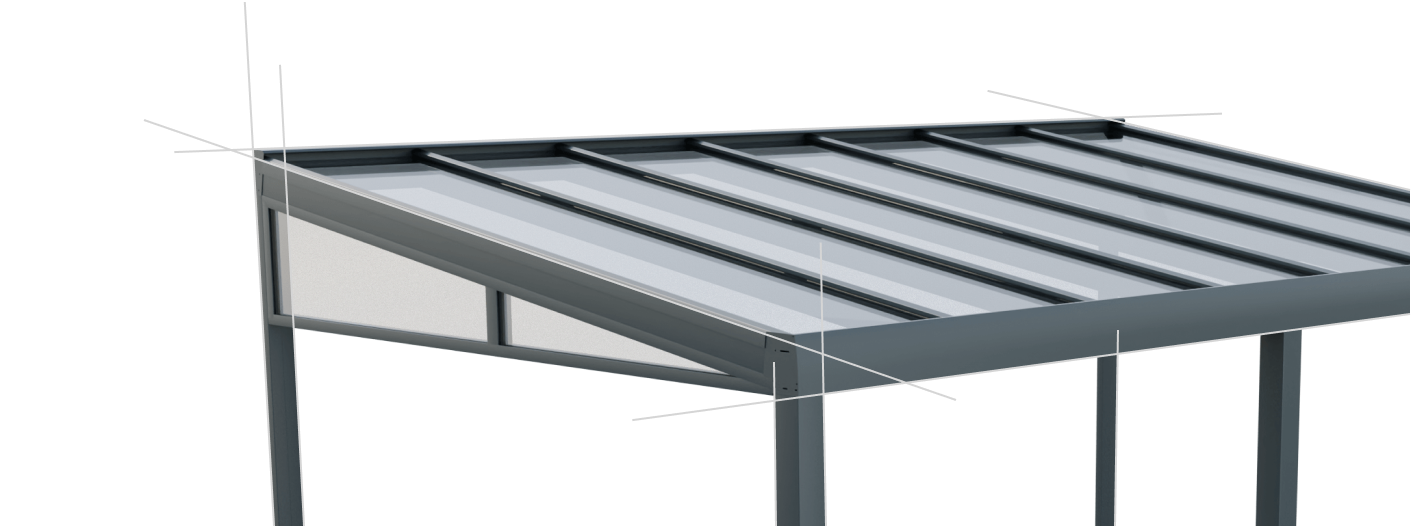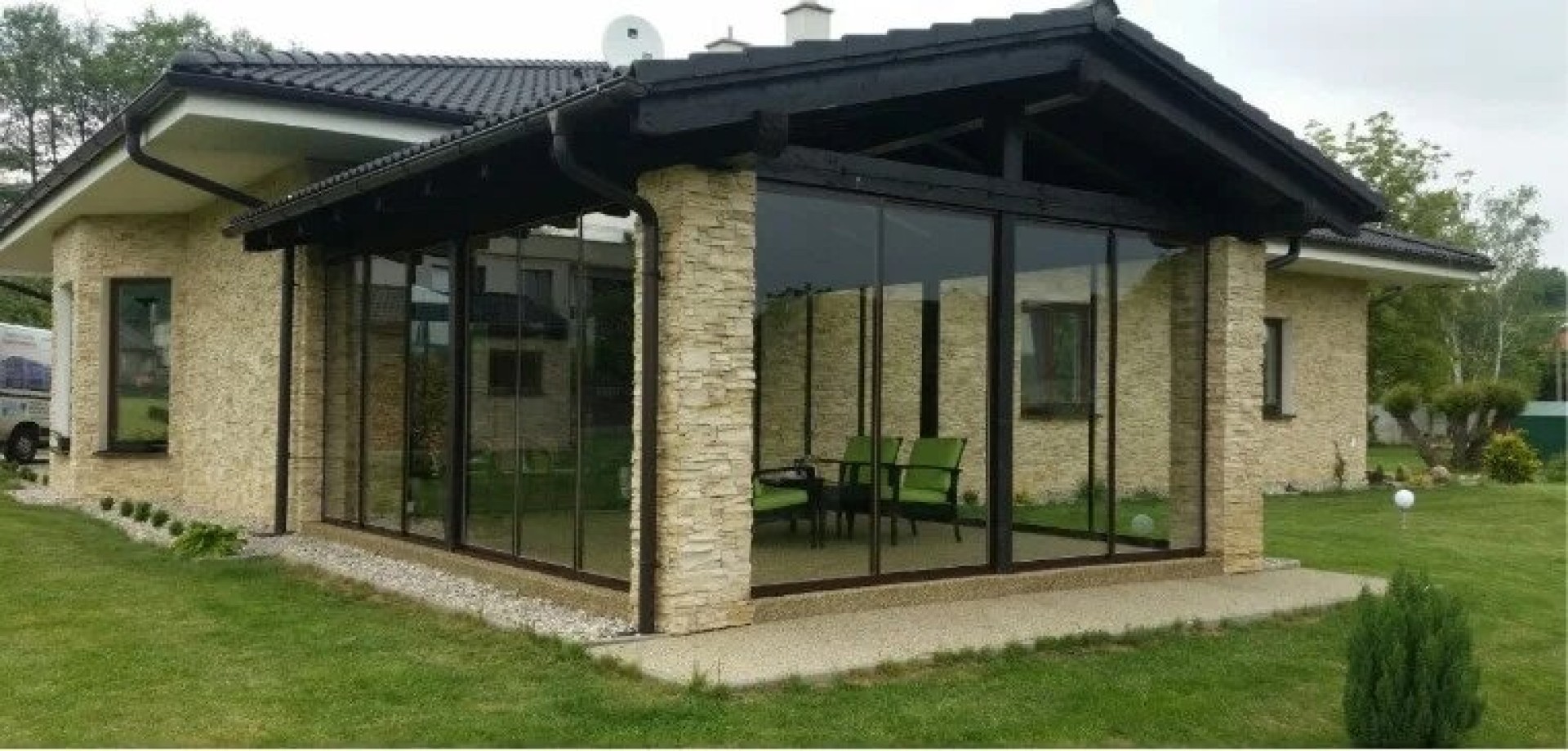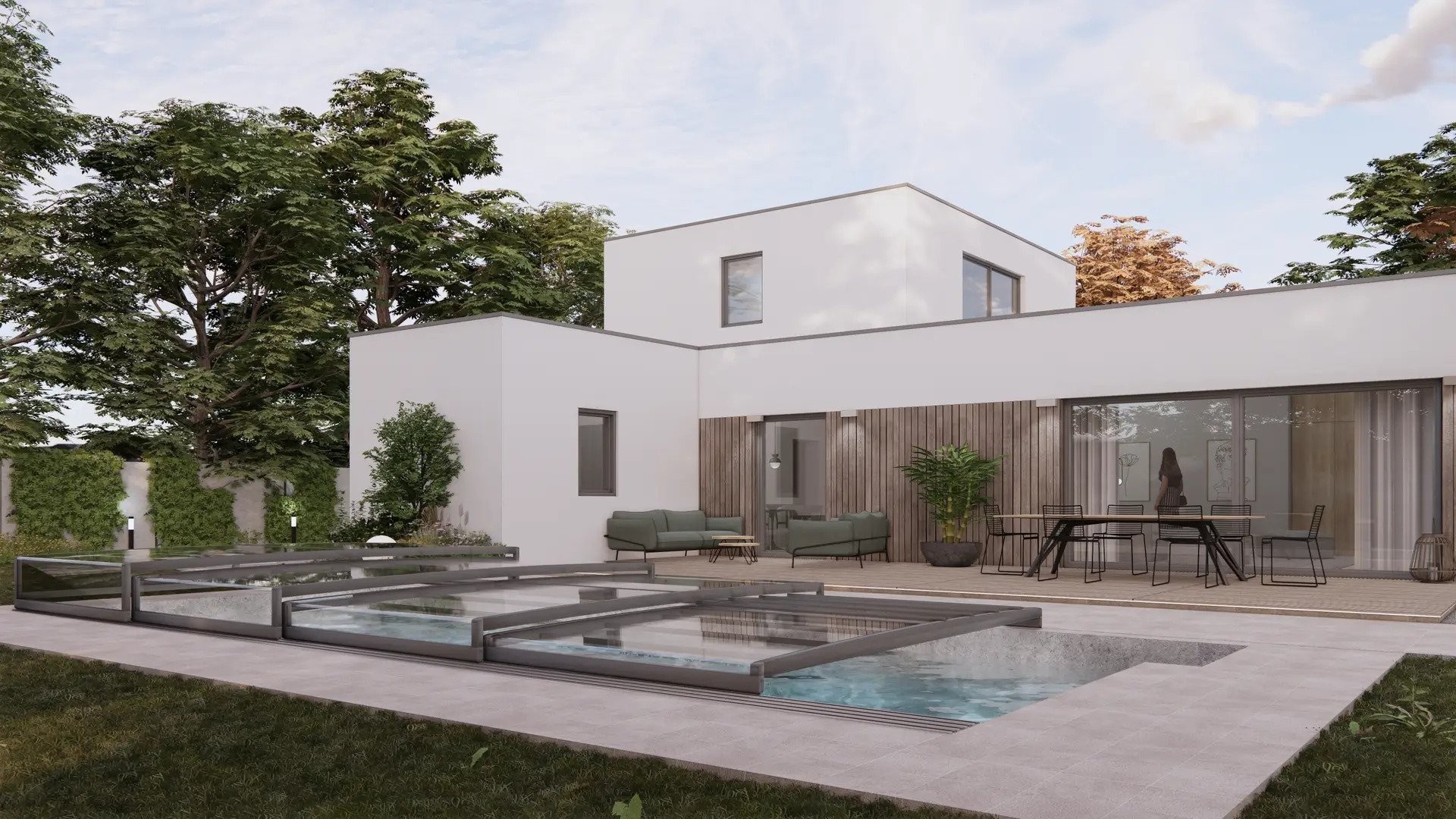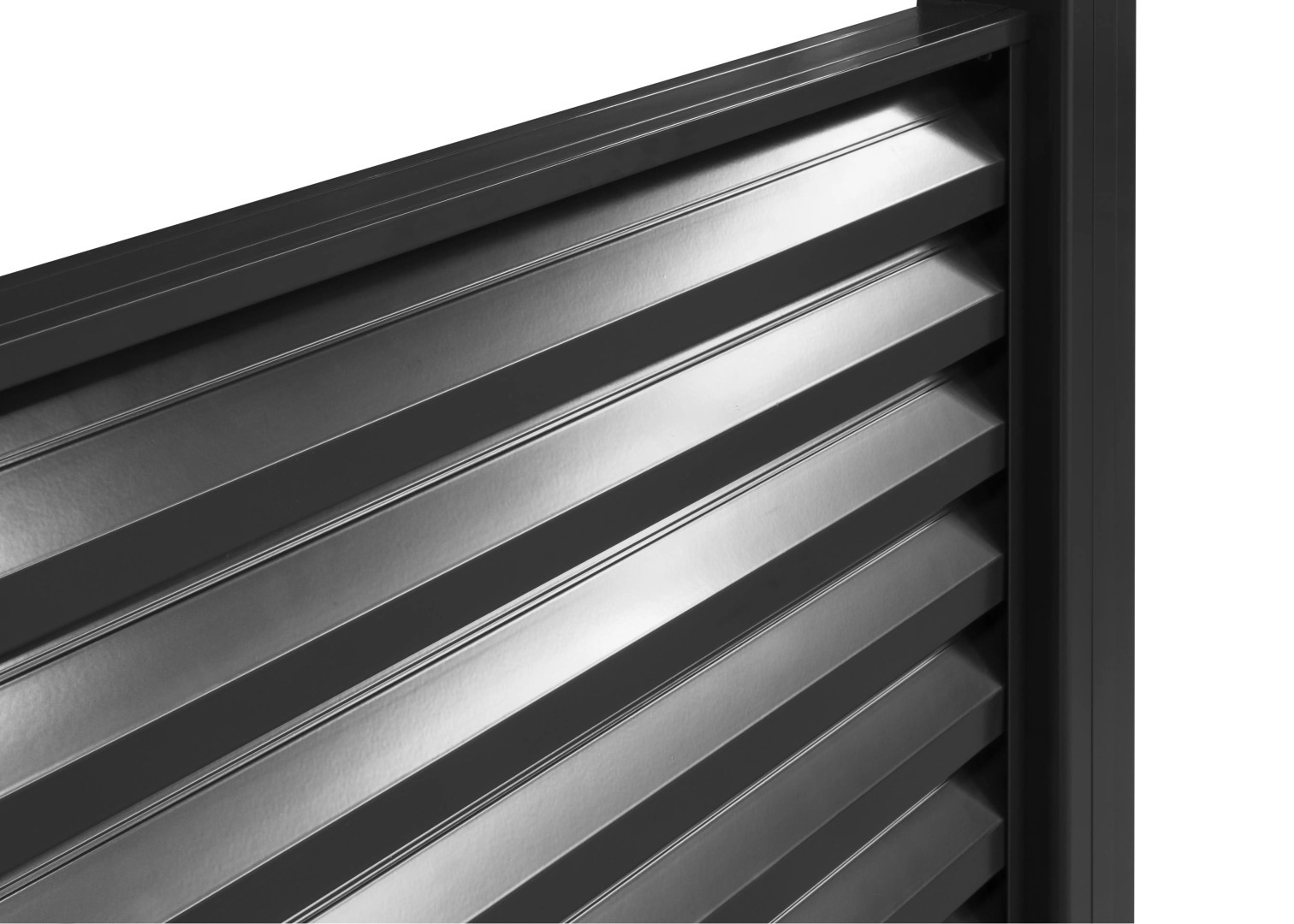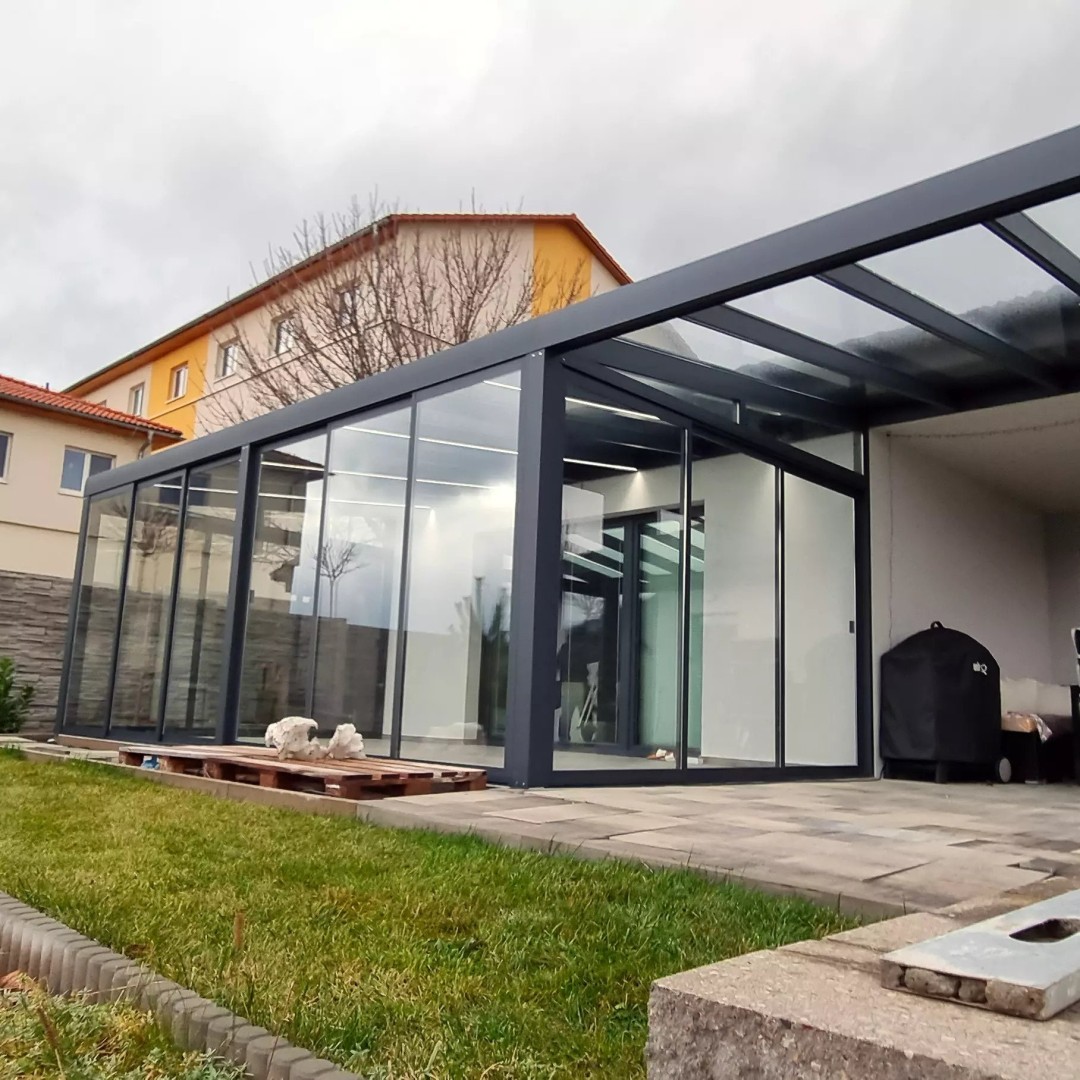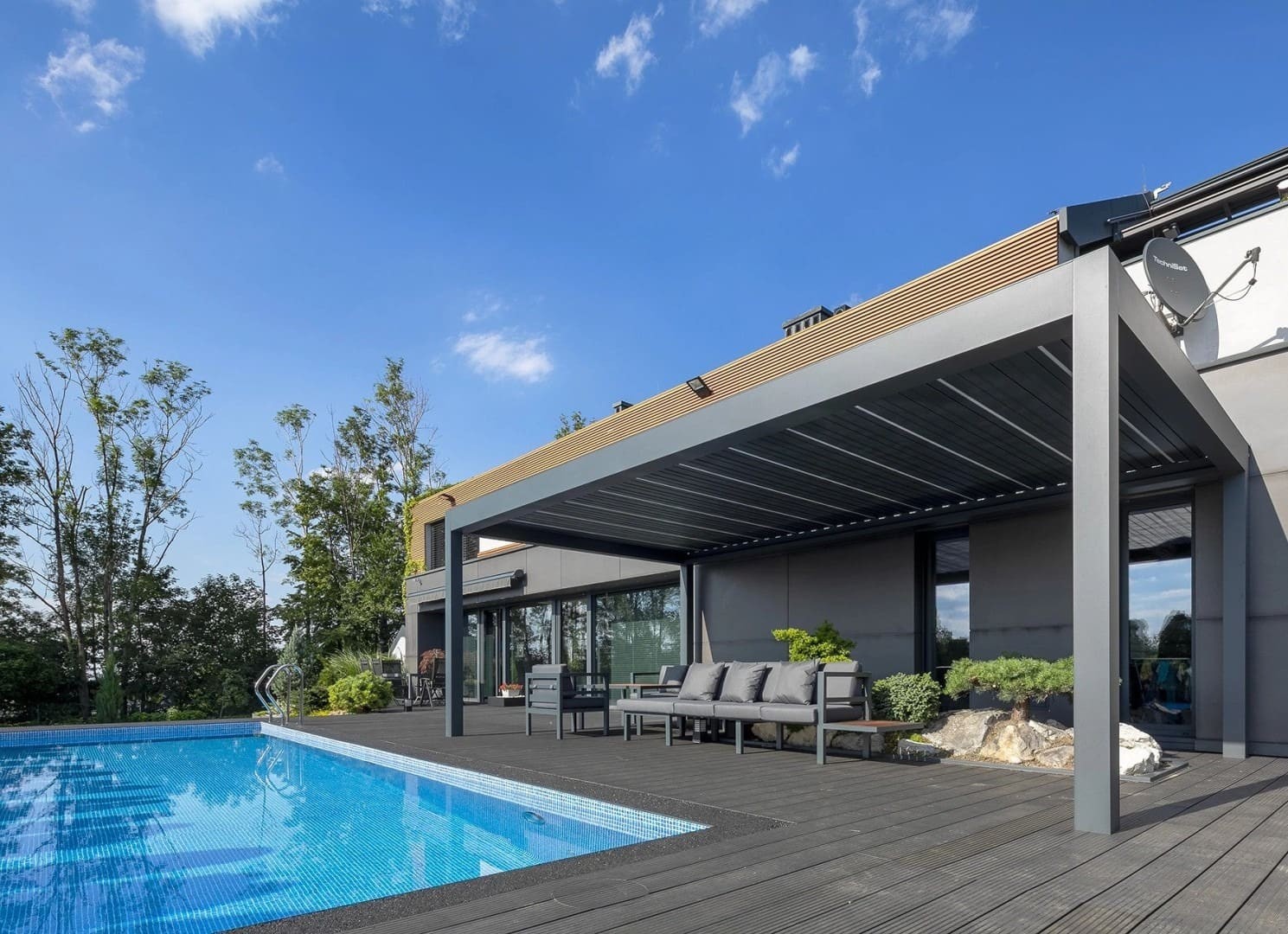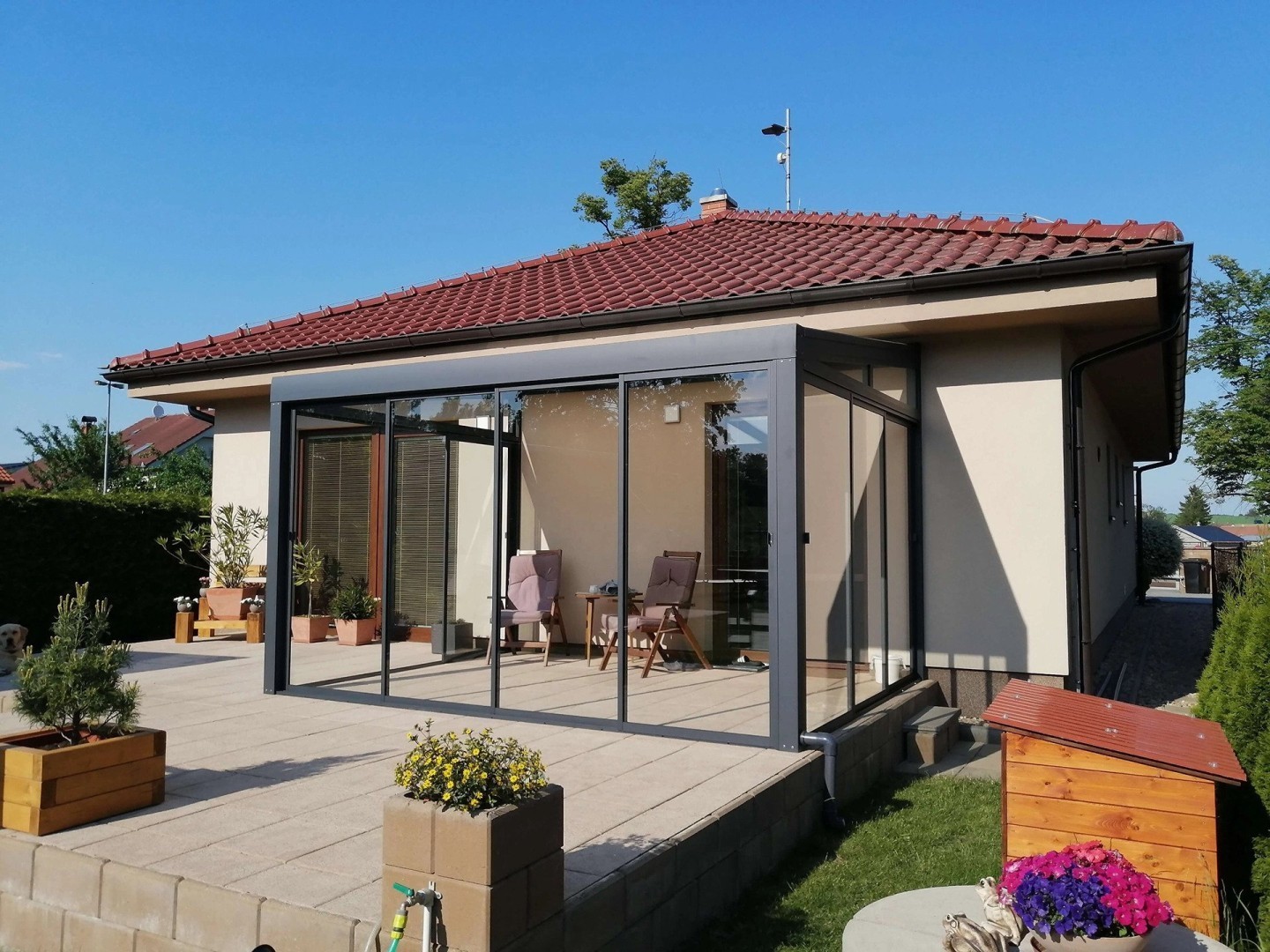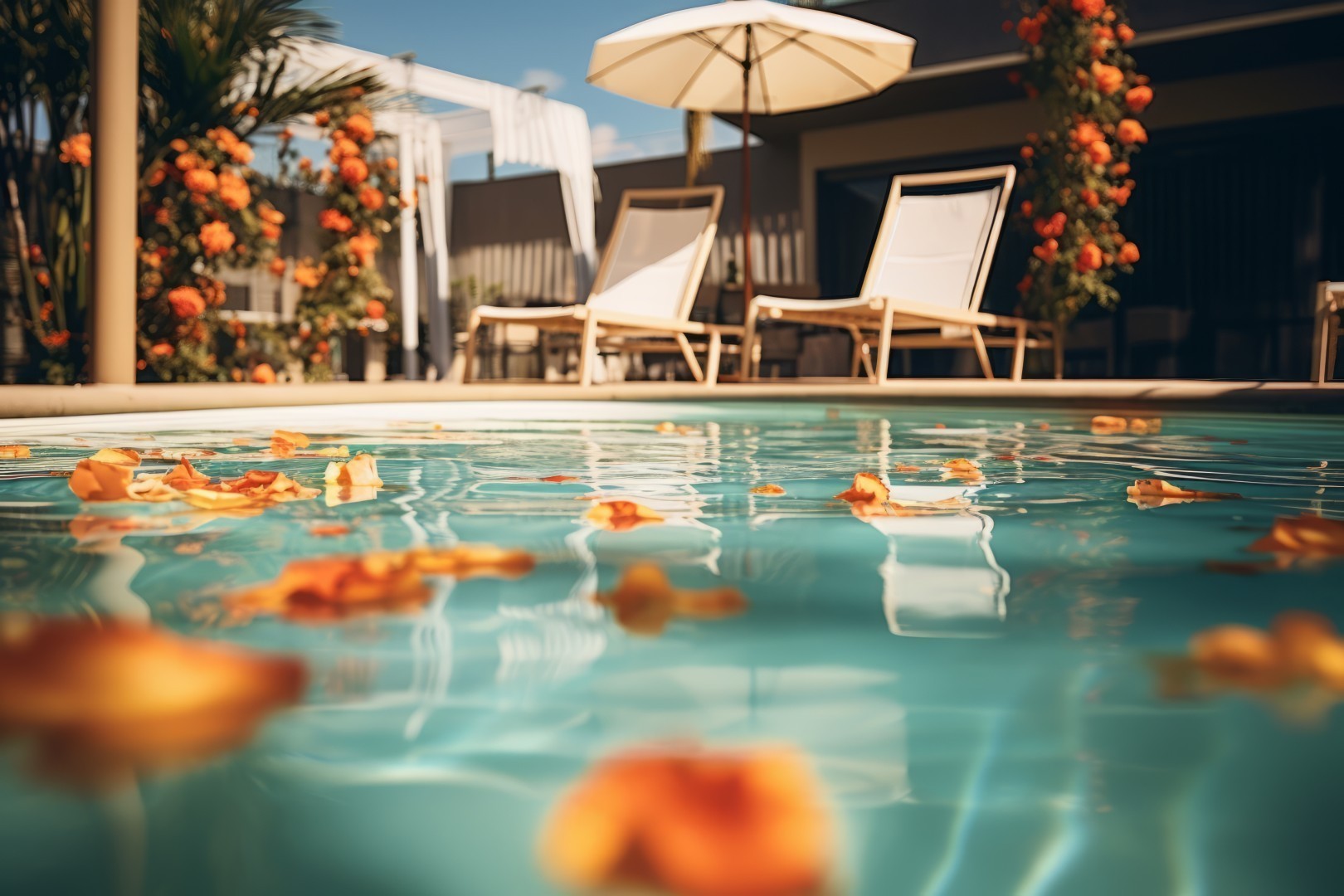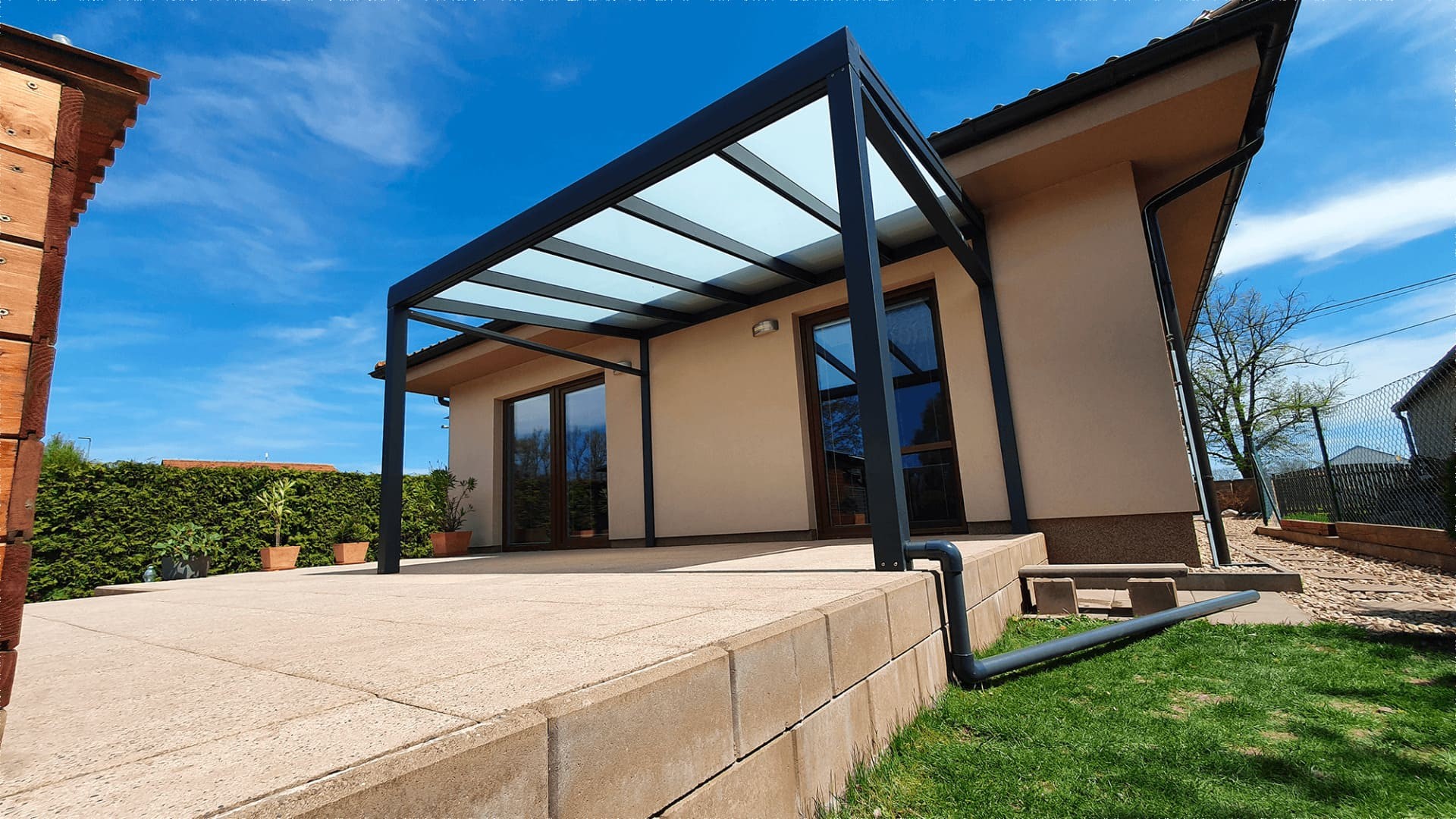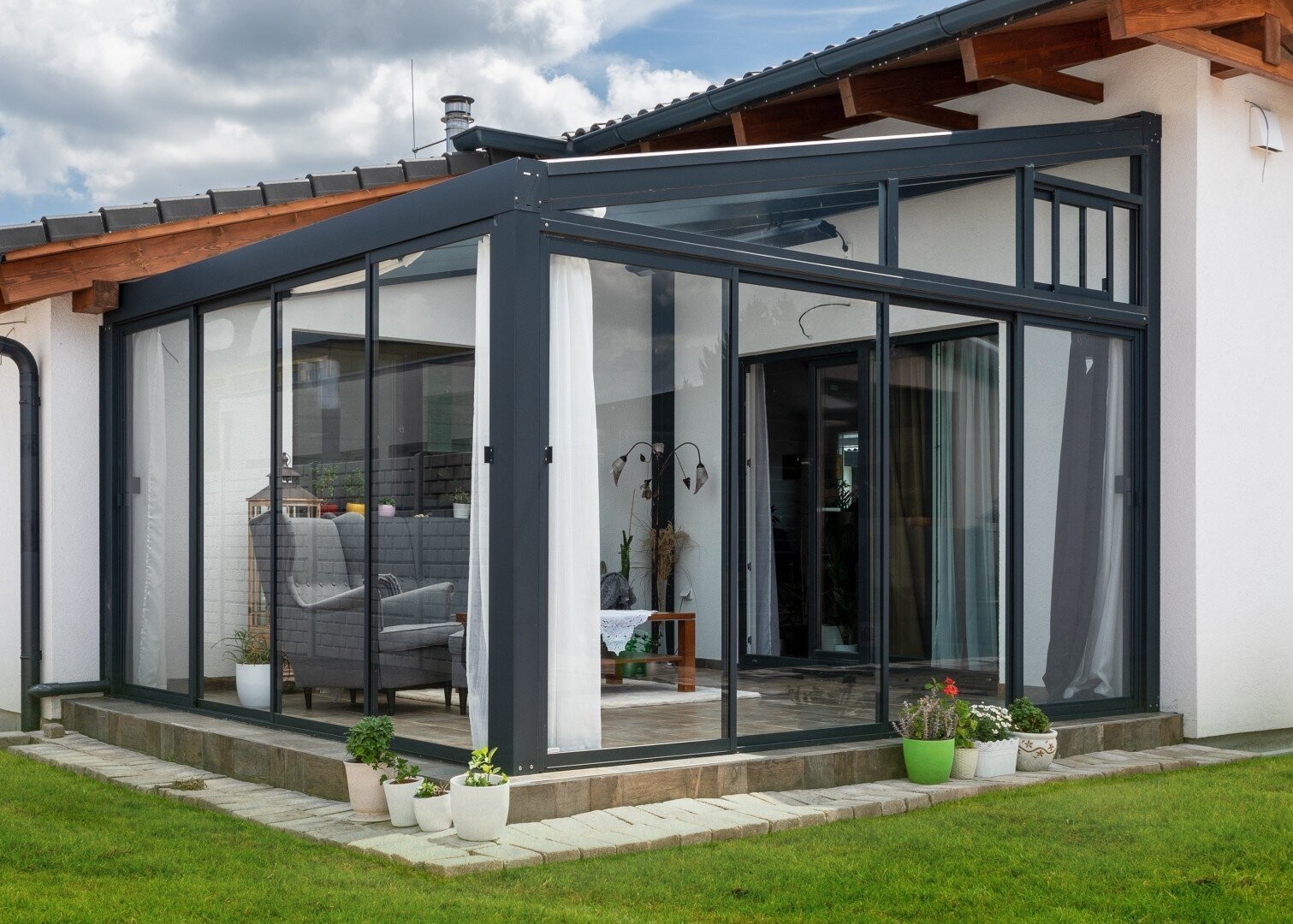Before you start digging the foundations for the pool, think carefully about what kind of pool it should be. The bigger your eyes get, the more work and paperwork there will be. Unless you have an oil field in your backyard, you probably won't be building an Olympic one. It will probably be a pool with a surface area of up to 25 m2, a depth of up to 1.5 metres and a removable cover.
These are pools that, by their nature and parameters, fall into the category of small buildings and do not require complicated dealing with building permits. You just have to report the small construction to the competent authority and you can start the construction.
A swimming pool with an cover is what you want
There is probably no one among you who hasn't thought about some form of cover with their pool from the start. And rightly so, because a pool without a cover could very quickly turn into a Brčálník pond and you into its keeper, the Reed.
A pool cover protects against dirt, falling leaves and insects, prolongs the life of the technology, protects against temperature fluctuations, prolongs the swimming season and, most importantly, is absolutely essential for the safety of children, pets and adults who sometimes act like children too.

Tip on the type of pool cover
When choosing a pool cover, there are several options that vary in design, functionality and price. Three types are most commonly encountered:
Telescopic pool covers are the perfect solution for those who want maximum flexibility and year-round pool use.
- Advantages: fully openable, individual segments slide into each other, flexibility in opening and height, modern appearance, good insulation.
- Cons: Requires more space to plug in, higher cost, and regular rail maintenance.
Sliding pool cover for smaller gardens and lovers of simple solutions
- Advantages: slides horizontally sideways, easier to operate, less space to retract.
- Cons: Weaker sealing, may be less durable in inclement weather.
Arched pool cover for demanding owners and connoisseurs of high comfort
- Advantages: elegant design, strength and stability, natural water and snow drainage, better wind protection.
- Cons: Higher price, can be dominant on smaller plots.
The material is also important
And the decision on which one you use will affect not only the price, but also the life of the cover. You'll choose between cheaper ones with a shorter lifespan and more expensive ones with a higher level of resistance to weathering, mechanical damage and a different degree of sealing ability.
When it comes to the construction of the pool cover, we're definitely aluminium entrants. Aluminium construction is one of the most popular, mainly due to its extreme practicality and durability.
- Indestructible: The biggest advantage of aluminium is its high resistance to weathering - it is not subject to corrosion even in environments with increased humidity or in contact with pool chemicals. In addition, its natural resistance to oxidation is often further enhanced by anodising or powder coating, which improves not only its appearance but also its durability.
- Lightweight but sturdy: It has a light weight that makes the design easier to handle, whether it's for assembly or daily use of the cover. At the same time, it retains excellent strength so that even larger and more robust covers remain stable and secure.
- It's aesthetically pleasing too: the possibility to choose the colour is an aesthetic plus, the aluminium profiles can be finished to match the house, the terrace and the inflatable.
Thanks to these properties, aluminium construction is considered the ideal material for a sustainable and reliable pool cover with a very long service life, often in excess of 20 years.

The highest quality and most commonly used filling material for swimming pool covers is chamber or full polycarbonate with UV filter. This modern plastic material offers an exceptional combination of properties that make it perfectly suited for the outdoors.
- It can withstand the elements: heavy rain, snow, hail or prolonged sunlight will not destroy it. That's why its surface is equipped with UV protection as standard, which prevents unwanted yellowing and embrittlement of the material over the years.
- Thermally insulating: it can retain heat inside the covered space, helping to keep the water and air at a more comfortable temperature, which can extend the bathing season by several weeks.
- Safe: Unlike glass, it is almost unbreakable, so there is no risk of injury in the event of impact or strong winds.
- Design variants: clear, smoke or milky shades influence both the appearance and the degree of shading and privacy.
- Light as a feather: Does not weigh down the structure and allows smooth movement in sliding or tilting systems.
Thanks to its durability, safety, thermal insulation properties and minimal maintenance, high quality polycarbonate is rightly considered the best choice for indoor swimming pool liners.
How much will all this cost me?
Are we going to divine from a crystal ball, or would you rather do the math as accurately as possible? Use our online calculator to configure the solution that best fits your vision and possibilities. What's certain is that it won't be free. But the feeling you'll get when you and your neighbor wave an inflatable pelican over the fence will be worth all the pennies.

